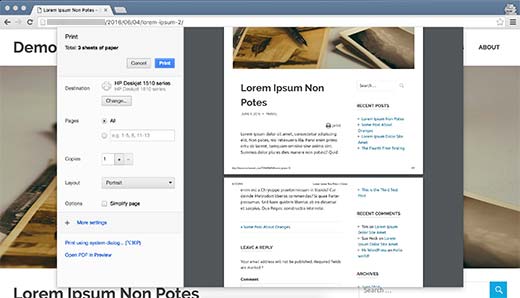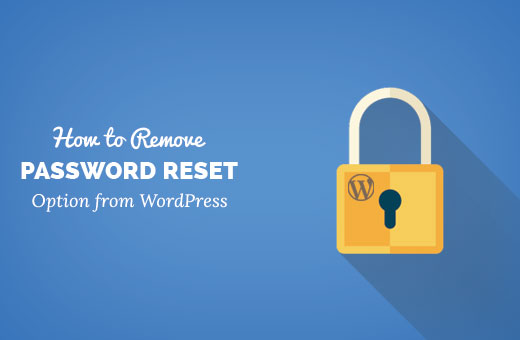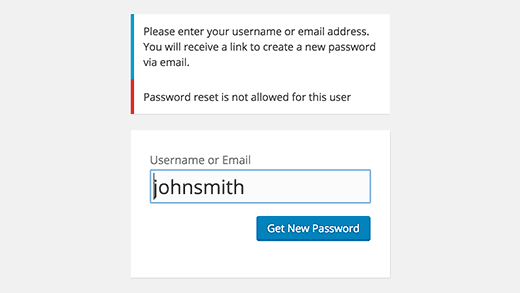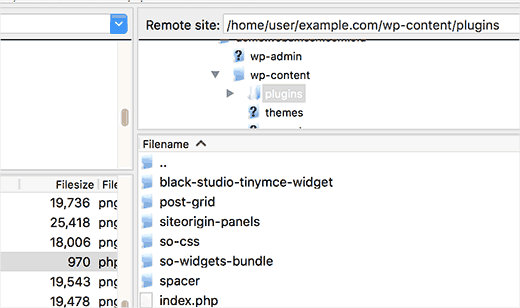alt="Why Free Web Hosting is Not the Best Option" src="http://whsr.webrevenueinc1.netdna-cdn.com/wp-content/uploads/2013/09/server2-500x375_c.jpg" />
Starting up a website is easy, effortless and can be done free of charge with trusted sites like WordPress.com and Blogger. While this may sound like a great option for people who are blogging as a hobby, if you want to become a serious blogger, create a useful site or go into business online, you need to understand why it’s not the best choice. Here are the eight major pitfalls of free web hosting:
1. Limited space
style="text-align: center;">
class="aligncenter size-full wp-image-6499 border" alt="Full House" src="http://whsr.webrevenueinc1.netdna-cdn.com/wp-content/uploads/2013/09/disk-full.jpg" width="750" height="500" srcset="http://whsr.webrevenueinc1.netdna-cdn.com/wp-content/uploads/2013/09/disk-full.jpg 750w, http://whsr.webrevenueinc1.netdna-cdn.com/wp-content/uploads/2013/09/disk-full-300x200.jpg 300w" sizes="(max-width: 750px) 100vw, 750px" />
You may not be worried about the size of your website right now, but if you are planning to post regularly, include supporting images and eventually add video or audio, bandwidth is an important consideration. Free web servers only provide limited amounts of space. Blogger, for example, has a total of 1GB of image storage and a limit of 1MB in page size. There’s also a 250MB size limit to any photos you upload through your mobile device. WordPress.com provides a total of 3GB of storage for your files and images. That may sound like a lot, but when you consider that you should be uploading high quality, pinnable images with every post if you want to be impactful, you’ll use up that space fairly quickly.
If you surpass that, you can upgrade either service for a fee – but if you’re going to spend, why not start off with the better option of investing in a professional web host?
2. Limited design and functionality
style="text-align: center;">
class="aligncenter size-full wp-image-6503 border" alt="dull color" src="http://whsr.webrevenueinc1.netdna-cdn.com/wp-content/uploads/2013/09/dull-color.jpg" width="750" height="321" srcset="http://whsr.webrevenueinc1.netdna-cdn.com/wp-content/uploads/2013/09/dull-color.jpg 750w, http://whsr.webrevenueinc1.netdna-cdn.com/wp-content/uploads/2013/09/dull-color-300x128.jpg 300w" sizes="(max-width: 750px) 100vw, 750px" />
To capture an audience, a stand out design is necessary.
As your blog grows, you may want to offer advertising on your site, add social media sharing or even offer useful functions, like attaching related links to your post, with the right plugins. Blogger, WordPress.com and other blog hosting service are limited in the number of designs they offer and plugins or widgets they allow you to use. In addition, there may be compatibility issues with getting approved plugins to work properly. While there are workarounds for those more adept in HTML and programming, backend updates like these are more challenging when using free hosting services. They also can prohibit some 3rd party services. For example, WordPress.com will not allow you to run Rafflecopter, which allows you to easily administer giveaways, an excellent way to generate traffic and work with brands. Paying for hosting eliminates these problems and provides flexibility to grow, expand and customize your site or blog as you see fit.
3. It doesn’t look professional
Whether you are blogging or getting online for a fledgling business, you will want to promote your site, work with brands, or offer products and advertising. Free web hosting sites look unprofessional and potential clients and employers may pass you up for opportunities. Keep in mind, too, that if you sign up with a free hosting service provider, you’ll need to have your own email without the hosting name it, making it harder for your contacts to remember you.
4. Limited monetization and opportunities
Many people start blogging with the idea of attracting income, a highly achievable goal, however, free web hosting providers can prohibit or restrict your ability to monetize your blog. In fact, they can actually cause you to lose income. For example, Blogger’s free service will not allow you to post any ads on your site that are not Google ads, which can be difficult to earn an income from. At WordPress.com, on the other hand, you cannot use Google AdSense or any third party advertising with their free service. You are also expressly forbidden from running sponsored or paid posts or content. (See their advertising policy href="http://en.support.wordpress.com/advertising/" target="_blank">here.)
5. It can hurt your site’s search engine performance
Google owns Blogger, which may help some Blogger sites gain better ranking – how much it does, though, is still a topic of debate. However, other sites are not in question – free hosting provides no assistance whatsoever for search engine optimization.
In fact, a number of common free hosting problems can actually harm your search engine performance.
Slow website speed, website going down too often, having your “top level” domain hosted outside your country, database errors and caching issues can hurt your search engine optimization efforts, especially on Google. Another problem is that low quality spam sites, which are often hosted on free servers, share your web hosting and can lead to poor ranking for your site in any search engine. You can avoid many of those issues with quality, paid-for web hosting.
6. You’re at the mercy of your web service provider
style="line-height: 1.5em;">Many years ago, I had a web client who found a strange page on her site. I logged into her host to discover that her hosting service had placed entire pages of ads on her website that we were unable to remove. It turned out to be a small line her contract and we were powerless to disable this free advertising. Your hosting contract can cover other restrictions and terms you may not like.
style="line-height: 1.5em;">For example, both Blogger and WordPress.com reserve the right to advertise on your blog and can legally distribute and modify the material on your blog. You also to carefully read the rules and regulations, right down to the fine print, of Blogger, WordPress, or any other free hosting services provider and strictly adhere to them or your site can and will be shut down. This is, of course, true of paid web hosting as well, but there are far less rules to adhere, other than the standard laws of the land, such as spam compliance policies. When reading the terms of service for style="line-height: 1.5em;" href="http://www.google.com/intl/en/policies/terms/" target="_blank">Bloggerstyle="line-height: 1.5em;"> and style="line-height: 1.5em;" href="http://en.wordpress.com/tos/" target="_blank">WordPress.comstyle="line-height: 1.5em;">, remember those are general terms. There are many links to more detailed information about what you can and cannot do with your site. Finally, you will only get limited a amount of customer service – if any – for your technical difficulties, whereas paid services generally offer a great deal of support.
7. Security risks and outages
style="text-align: center;">
class="aligncenter wp-image-6504 border" alt="security" src="http://whsr.webrevenueinc1.netdna-cdn.com/wp-content/uploads/2013/09/security.jpg" width="750" srcset="http://whsr.webrevenueinc1.netdna-cdn.com/wp-content/uploads/2013/09/security.jpg 640w, http://whsr.webrevenueinc1.netdna-cdn.com/wp-content/uploads/2013/09/security-300x185.jpg 300w" sizes="(max-width: 640px) 100vw, 640px" />
In 2011, Blogger.com did an update that unintentionally locked users out of their sites overnight. That doesn’t sound too bad, but what if you were launching a game or book, timed just at the hour of the lockout? What if you suddenly got a spam attack that overloaded your account?
It’s as simple as this: you get what you pay for.
Free hosting providers simply cannot afford to provide you the security you need, which is part of the reason why the more trustworthy providers limit functionality. Remember that client I discussed in the last bullet? While searching her site, I stumbled into other hosting clients on the same server. Hopefully, poorly secured web servers like that are a thing of the past, but you don’t want to expose your site to poor security that’s not robust enough to survive a full-blown malware attack.
8. Transferring your site later is more difficult
You might think you’d first like to try this service to see if blogging or a website is a good fit for you. I have no argument with that, but keep in mind the future hassles that transferring to a new domain will bring such as downtime while your site is transferred. Exporting and importing can go flawlessly, or unforeseen errors can make it a nightmare. Transferred content can contain glitches that are time consuming to fix. You also need to make sure that your permalinks are consistent between services, your RSS feed doesn’t lose subscribers and that all your redirects still work for pages that have been moved or removed. Finally, you will need to redirect your readers to the new site. That’s all achievable, but you can save all that effort by starting with a paid web host.
Free web hosting has a lot of pitfalls, while paid web hosting nowadays is fairly affordable. You can register your domain name for less that a year, and there are many high-quality hosting services that have packages starting under a month. You’d be smart to do some research first, and href="/blog/web-hosting-guides/top-20-questions-to-ask-a-web-host-before-you-sign-up/">ask the right questions before signing up for a paid service, but investing a small amount of money into web hosting will provide you security and flexibility, and put you in full control of your website.
Image credit: href="http://www.flickr.com/photos/kohara/" target="_blank">Kohara and href="http://www.flickr.com/photos/protohiro/" target="_blank">protohiro.
Page 18 – Web Hosting Secret Revealed










